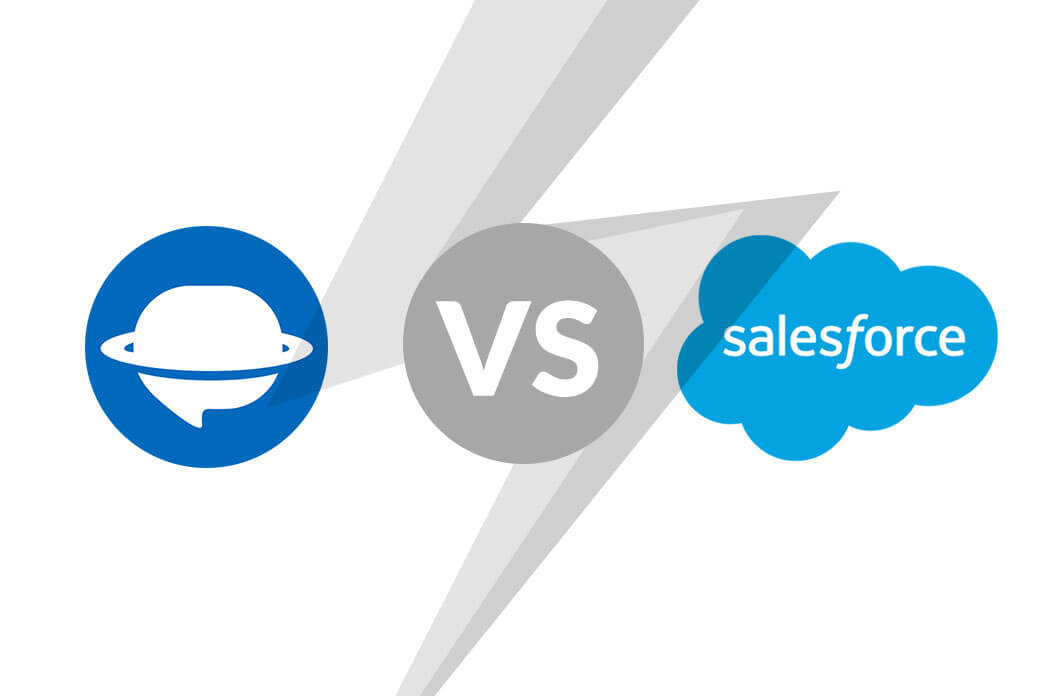Customer history in any company or organization is a precious commodity. It is your number one asset because it
- represents solved customers’ challenges and personal connections
- serves as a valuable pool of information you can use for all kinds of analysis
Are you intimidated by a migration to a new help desk system? Don’t be. Moving your help desk data would provide easy access to customer conversations, improve business continuity and reduce glitching of the current platform.
Yet, there’s just this one problem. Chances that your migration project will fail are high. And they are almost sure if you do it without planning. There are many things to keep track of, but don’t fret. We’ll discuss the main reasons why data migration projects fail and why data migration is essential. So let’s dive right into things.
Prepare First, Migrate Successfully Later
As the age-old saying goes, if you aren’t planning, you are planning to fail. The same applies to your migration project. The more time you spend creating a roadmap, the less likely you will lose records, experience compatibility issues, and the like.
Generally speaking, there are five steps you have to take to migrate to a different help desk successfully.
- Get your team ready
- Review customer requests and related records
- Draw your data migration plan
- Find the migration option
- Tune your new platform
Regardless of the reasons for data migration, the goal is to improve performance and competitiveness. Lack of data migration planning brings about data issues and transfer failures during the switch.
5 Pitfalls of Data Migration
1 Failing to notify your company
Problem: Irrespective of the size of the migration, there are people somewhere who would eventually rely on the data you are about to move. You must give them heads-up information.
Fix: Announce company-wide about the upcoming migration to exclude stuff impacting the project failure.
2 Lack of expertise
Problem: Even though migration is a straightforward objective, there are many complexities involved in moving data. Running it manually can cause less favorable results.
Fix: You can hire a skilled outsourcing team to write a migration project for you or use an automated migration service.
3 Poor or lack of planning
Problem: After the data switch, you noticed that you’ve forgotten to migrate some specific records. Or even worse, you overlooked the number of agents or groups or some other data objects.
Fix: Having a solid data migration plan saves lots of hours once the actual process begins. The plan saves your time.
4 Not preparing your data
Problem: You have to deal with many different records, make sure that everything sits where it should, and not disrupt someone’s work. Besides, you need to repeat the copy/paste process if you do it manually. Or search for overlooked records if you’re running a custom-written script.
Fix: Use reliable software for the migration as it will prevent manual errors. An automated tool will save time and effort.
5 Using unproven migration strategies
Problem: It is important to do detailed research and ensure that the data migration procedures you intend to use have worked effectively in the past. Rather than experiment with random suggestions given by strangers online.
Fix: Draw your data migration strategy. You can consult online success stories about migration but be careful and don’t follow them blindly. Keep clear about what data is needed and what related records are essential to switch.
5 Reasons Why Data Migration Projects Fail
Not all data migrations that started were completed. Many things can go wrong, and often, keeping tabs on all of them is difficult. We handpicked four common reasons why most migration efforts fail.
#1 Poor Knowledge of Source Data
Don’t assume that you can easily configure your data into categories of a new system. This is especially relevant if you are trying to use custom CSV import files (or even general CSV export files dished out by your help desk). Run a thorough check of previous data and dig into the peculiarities of the target platform. Otherwise, you risk having a ton of duplicates, missing info, misspellings, and erroneous files.
#2 Underestimating Data Analysis
A surface level or complete absence of data analysis will ultimately be counter-productive in data migration. To uncover hidden errors, double-check the data you are about to move. If it is left untouched, you get ready to meet the consequences after the migration.
#3 Neglecting to Onboard an Expert Early
Sometimes the services of experts are acquired late in the process or when one hits a roadblock. If your migration turns out rather complex, hire the expert at the beginning of the data import process. That would ensure that they oversee the whole process to ensure optimal success.
#4 Late Evaluation of the Final Results
To avoid loss of records, you should test the help desk data migration results as soon as the process is complete. That would ensure loopholes discovered during the testing period get fixed immediately.
#5 Using Vendor’s Native Tool Instead of a Migration Service
Some vendors offer migration tools that move records within the vendor’s ecosystem. Or allow you to carry a set number of documents in one pass. Not being aware of these limitations would result in more time and money being spent.
At first sight, it seems pretty logical. You go to the vendor to move your data to their platform. But the flip side is that vendor develops their platform and don’t dig into peculiarities of the data structure of competitors. In contrast, the automated service learns precisely all specifics of help desk platforms on the market.
As a proof of concept, we share some tips from our lost customer. (Yep, unfortunately, such things happen too.)
We had in mind to migrate to Jira service desk, but Jira support didn’t offer migration services but pointed out to a forum post in which people were very happy with your service. So we started a demo. During the process, we changed our minds regarding JIRA and decided on Zoho. During the sales process, Zoho didn’t confirm Data migration from previous systems, so we started a new demo. But a few weeks in, they offered migration, so we opted for them since, in our view, it makes sense if the system’s own support team (in this case, Zoho) handled the migration. It was not an easy task; the whole process took 6 weeks out of which we had no help desk platform for about 2 weeks, so we handled all our customer support all via email. Once the Zoho migration team finally did the migration, we found out that some data didn’t import, so we had to manually inspect thousands of records to ensure they would reimport properly. Most issues on importing tickets or posts were due to errors on the character set or some other unforeseen issues due to field incompatibility. At the end of the day, the data was migrated successfully, but I wonder if we had used Relokia if the experience would have been better. We don’t have plans now to migrate anything else, but if I’m asked by colleagues and peers, I would tell them to consider Relokia given our experience. And they would be my first go-to for any future migration process. It was not a pricing issue, since we had considered it as the setup cost; it was just the fact that we assumed that handling the migration with the same software provider made more sense.
4 Tips to Boost Your Data Migration Roadmap
1 Gauge the Scope
Before performing data migration, you must understand how you migrate (CSV import or via APIs). You must also understand how much data is being migrated and the general structure of each record.
2 Define the Migration Method
This is where the organization/company selects the type of migration to use, the Big Bang or Trickle. For this, consider the data structure you are pulling out and the target system. Here’s the difference Between Big Bang and Trickle migration approaches.
BIG BANG MIGRATION | TRICKLE MIGRATION |
The total transfer is completed within a limited amount of time | The total transfer is done within a more extended amount of time |
The migration process is done in one pass | The migration process is done in phases |
Old and new systems don’t run in parallel | Old and new systems run in parallel |
3 Test before commit
This is the stage you should run a test to ensure the accuracy of the implementation and completeness of the migration. To test it quickly, try our migration tool with a free demo.
4 Triple-check your work
After the testing phase, check if you have all records in place and surf the current data whether you didn’t miss something vital. Having a system to audit the data accuracy can prove to be a time saver.
To Sum Up
An automated help desk migration system can help you alleviate many of these limitations. Moreover, it can solve most of your data migration challenges. As it will not only ensure timely data delivery but the accuracy of the migration itself. If you are searching for an automated solution that respects your time, reach out to our experts.
Frequently Asked Questions
- Identify the data format and a new help desk system;
- Plan the size and scope of the migration project;
- Audit and backup all data;
- Test a migration tool;
- Execute the data migration;
- Test the results of data migration;
- Follow-up and maintain a data migration plan.
A big bang migration strategy is a global replacement of your data. Yes, it takes lots of time. However, users feel it like a quick change. In this case, you move all your data from one help desk to another.
A data migration service is a cloud service that makes it possible to move data from one location to another, one format to another, or one application to another. In short, you introduce a new system or location for the data.
The cost of data migration depends on the number of migrated records, peculiarities of source and target platforms, and the needed customization if you use an automated tool. However, if you use the freelancer’s services, you would pay per hour.
There are four types of data migration: database, application, storage, and cloud migration. Database migration is the process of moving data between two database systems. Storage migration deals with importing data, such as a hard disk or the cloud, from one storage device to another. Application migration happens when a business wants to move from one framework to another. Finally, cloud migration is shifting from one cloud platform to another.
It depends on the type of platform you migrate from. Mainly, all tools are typically offered as a solution suite, where the vendor company supports the client’s end-to-end cloud journey.



